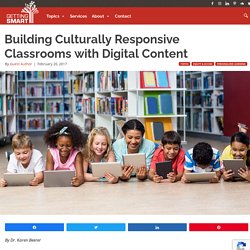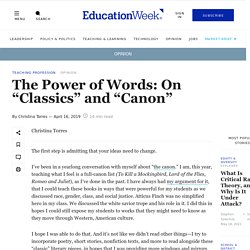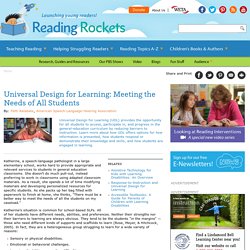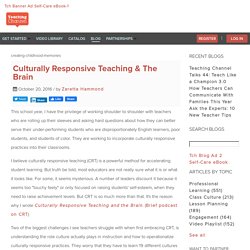

TEXT - Expanding the Canon: How Diverse Literature Can Transform Literacy Learning. TEXT - Right to Supportive Learning Environments and High Quality Resources. TEXT - Building Culturally Responsive Classrooms with Digital Content. By Dr.

Karen Beerer Recently, during one of the professional development events I occasionally facilitate as Discovery Education’s Vice President of Learning and Development, I asked a group of building-level school administrators, “What keeps you up at night?” TEXT - Steps to Authenticity: How authentic are your culturally relevant texts? TEXT - Selecting and Using Culturally Responsive Children's Books. TEXT - The Power of Words: On "Classics" and "Canon" (Opinion) The first step is admitting that your ideas need to change.

I’ve been in a yearlong conversation with myself about “the canon.” I am, this year, teaching what I feel is a full-canon list (To Kill a Mockingbird, Lord of the Flies, Romeo and Juliet), as I’ve done in the past. I have always had my argument for it, that I could teach these books in ways that were powerful for my students as we discussed race, gender, class, and social justice. Atticus Finch was no simplified hero in my class. VIDEO - Interest-Based Electives: Engaging Students With STEAM Explorations (3 mins 47 secs) VIDEO - Using Technologies to Support Diverse Learning Needs (6 mins 9 secs) VIDEO - A Student-Centered Model of Blended Learning (5 mins 48 secs) VIDEO - Station Rotation: Differentiating Instruction to Reach All Students (5 mins 15 secs) TEXT - Assessment, Flexible Grouping, and Research-Based Instructional Strategies: Powerful Tools for Co-Taught Classes.
By Tina Spencer, M.S., and Lee Anne Sulzberger, M.Ed.

February/March 2013 Co-teaching is one option for delivering special education services to students with disabilities in general education classes (Friend, 2007). Within this model, two or more professionals deliver content grounded in purposeful instructional intensity to a diverse group of students in the same classroom. Co-teaching partners can help meet the varying learning needs of students in their classes by adopting the principles of differentiated instruction. Tomlinson and Imbeau (2010) describe differentiation as an instructional approach that “results from an ongoing process of trial, reflection, and adjustment to the classroom itself” (p. 13). TEXT - 8 Ways to Get Real With Student Differentiation. Last fall, the Brookes Publishing team created a little poster about student differentiation that took off in a big way.

Check it out: The poster went viral as educators shared their love for the Fair is Not Always Equal philosophy—but some teachers asked the tough questions about student differentiation. Realistically, how can we find time to differentiate our teaching for 30 students every single day? We also have the pressures of standardized testing. How can we check off all the boxes and still individualize learning for our students? TEXT - Teaching Tools and Strategies for Diverse Learners. VIDEO - W.I.N. (What I Need) Time Explained (4 mins 2 secs) TEXT - Universal Design for Learning: Meeting the Needs of All Students. Katherine, a speech-language pathologist in a large elementary school, works hard to provide appropriate and relevant services to students in general education classrooms.

She doesn't do much pull-out, instead preferring to work in classrooms using adapted classroom materials. As a result, she spends a lot of time modifying materials and developing personalized resources for specific students. TEXT - Using Playlists to Differentiate Instruction. TEXT - Culturally Responsive Teaching & The Brain. This school year, I have the privilege of working shoulder to shoulder with teachers who are rolling up their sleeves and asking hard questions about how they can better serve their under-performing students who are disproportionately English learners, poor students, and students of color.

They are working to incorporate culturally responsive practices into their classrooms. I believe culturally responsive teaching (CRT) is a powerful method for accelerating student learning. But truth be told, most educators are not really sure what it is or what it looks like. TEXT - Culture in the Classroom. TEXT - Culturally Responsive Teaching Puts Rigor at the Center.
TEXT - 3 Tips to Make Any Lesson More Culturally Responsive. TEXT - Equity Literacy for All. VIDEO - Wendy Nelson-Kauffman on Culturally Responsive Teaching (3 mins 43 secs) VIDEO - Introduction to Culturally Relevant Pedagogy (4 mins 40 secs)